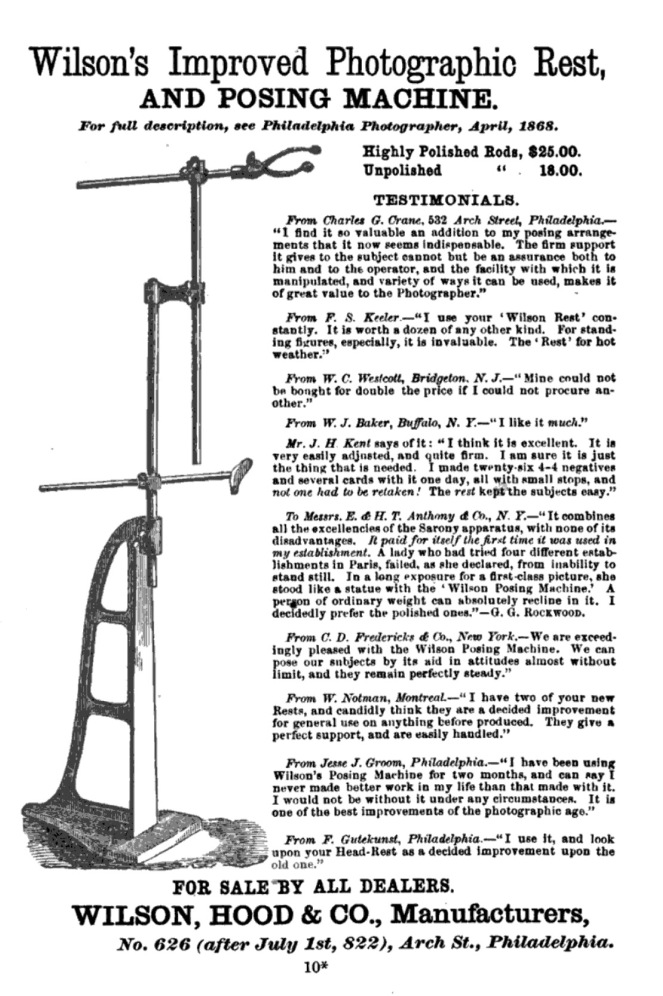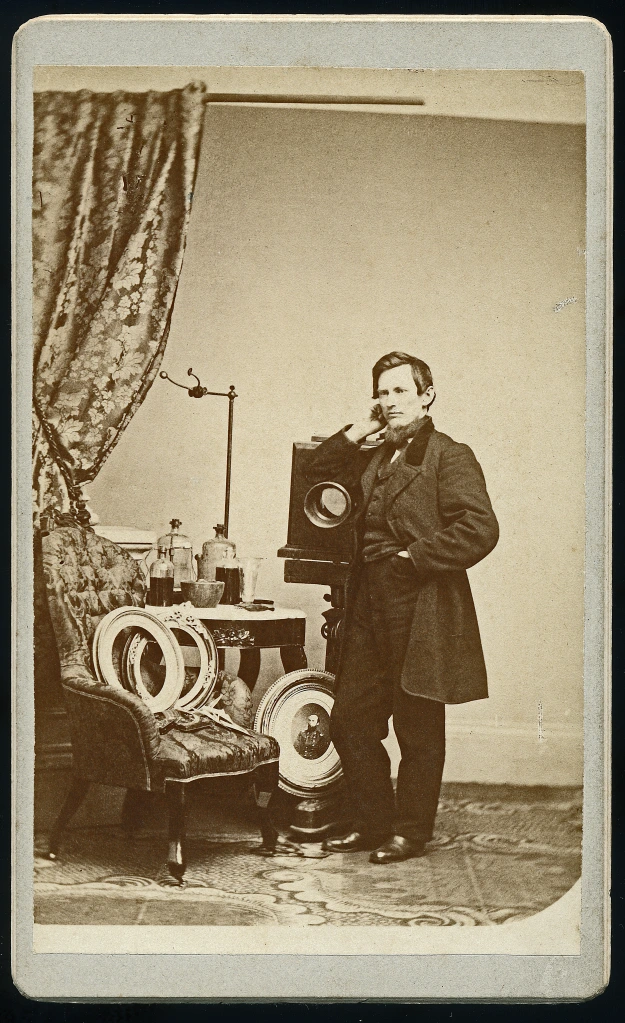There is a pleasing symmetry in the idea of the flamboyant Napoleon Sarony photographing Oscar Wilde because they were both specialists in posing—albeit from opposing ends of the camera.
So it is not surprising that they also had parallel views about posing.
STRIKING A POSE
In an interview towards the end of his life, Sarony described the method of arranging his sitters with an almost Wildean flair when he said that: ‘The art of posing is in not posing. The true pose is not a pose, but a natural position.’ This remark is similar to Lord Henry’s remark in Wilde’s The Picture of Dorian Gray: ‘Being natural is simply a pose, and the most irritating pose I know.’ Sarony’s artistic version lacks Wilde’s irony, of course.
But there is a more practical irony that Sarony can claim—his practice of arranging his sitters as nature intended by the use a mechanical contrivance.
This he achieved by use of a posing machine, an innovation of Sarony’s brother, Oliver (also a photographer, working in England). Napoleon Sarony brought the iron rest back with him to America where he patented an improved version that bore his name, and which he marketed to other photographers.
Although the device may have been used originally to enhance stillness during the days of longer exposures, its use continued into Wilde’s era by allowing subjects to relax, and giving Sarony more time to arrange a desired posture without his models tiring.
The “rest” is now history but here are a few historical examples of the contraption and its use.
© John Cooper, 2020.
Text is adapted and extracted from the article “A Picturesque Subject Indeed! The Sarony Photographs of Oscar Wilde” by the present author, first published in The Wildean, [No. 55 July 2019], journal of the Oscar Wilde Society.









The posing machine was used as a murder weapon in one of the episodes of Murder Rooms. I thought at the time its creepiness had to do with its appropriation in the story (mad photographer trying to capture the moment the spirit leaves the body), but no, these advertisements convince me that the gadget was creepy in its own right and when used as designed. Such a Pre-Raphaelite idea, really, that artifice is best at reproducing “nature”.
LikeLiked by 1 person
Oliver had a studio on St. Stephen’s Green, Dublin.
LikeLiked by 1 person
With my interest in Industrial Archeology I appreciated the Philadelphia connection with the advert from Wilson, Hood and Company dated 1868.
I wonder how long the device was in use and whether it supported Oscar’s dramatic portrait of 1882?
LikeLike
Thank you, a very interesting topic.
LikeLike